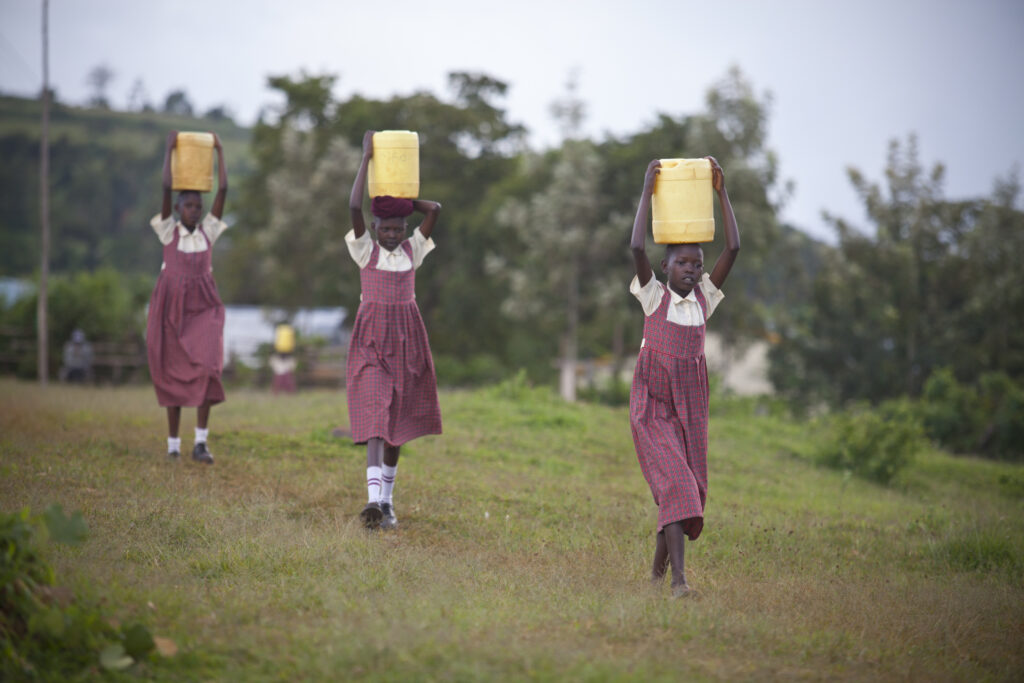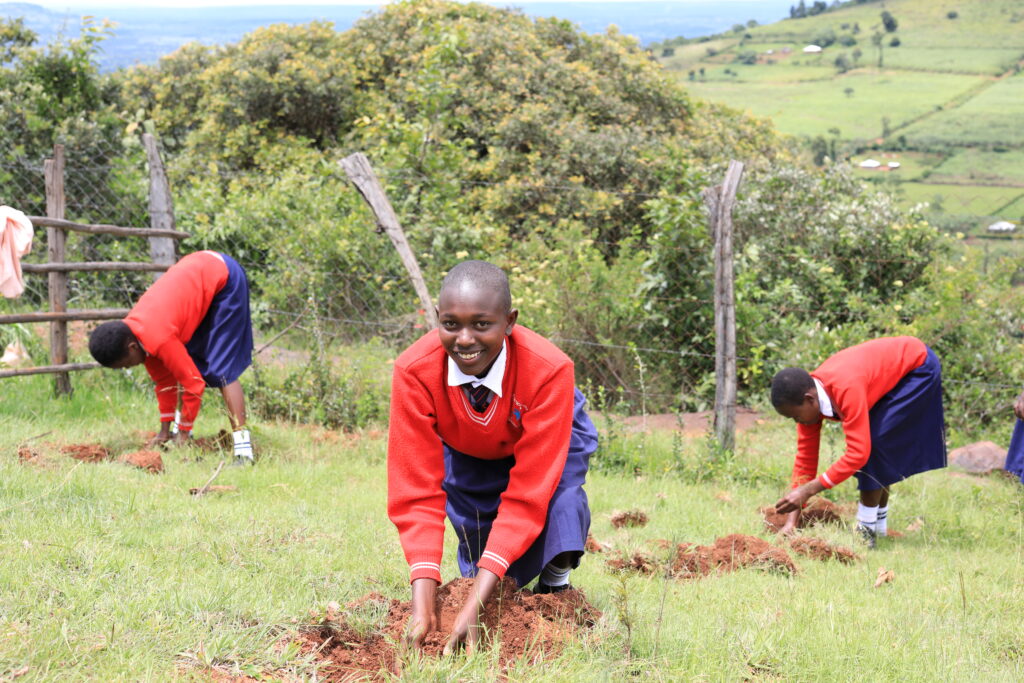This Earth Day, we must recognize the social dimension of the climate crisis. Why? Because climate change is not gender-neutral. It disproportionately impacts women and girls—who are also uniquely equipped to fight it.
Climate change affects men and women differently. It’s a threat multiplier; rather than burdening everyone equally, it amplifies existing inequalities and vulnerabilities. Around the world, and especially in sub-Saharan Africa where our programs operate, gender-based social structures give women and girls an uphill battle relative to men in the fight against climate change.
In many communities across rural sub-Saharan Africa, men hold the lion’s share of money and social power. In addition to these disadvantages, African women face some of the following unique challenges. First, since women and girls are responsible for collecting water in three out of four water-scarce households, worsening drought forces them to travel further to find water sources, taking time away from school, work, and other responsibilities.
Women are also more likely than men to work in the informal economy, which is less resistant to climate shocks. For example, informal workers typically lack access to social protections—like health care, unemployment benefits, and pensions—which means they have no safety net during climate disruptions. Women agriculturalists also face particular discrimination, as they receive only 10% of credit granted to farmers in Africa. This prevents them from purchasing inputs—like drought-resistant crops and alternative agricultural technologies—that are necessary to adapt to environmental stress.

Structural inequalities like these can be unapparent and difficult to measure, but they manifest dramatically in times of crisis. Natural disasters are destabilizing, and people must cope economically and socially in their aftermath. This burdens girls in particular, because, as feminist and human-rights defender Matcha Phorn-in explains, “If you are invisible in everyday life, your needs will not be thought of, let alone addressed, in a crisis situation.”
For instance, child marriage increases following climate disturbances. In many countries, marriage proposals include a bride price (or a payment made by the groom to the family of the bride), which can turn young girls into economic assets. Similarly, the fallout of natural disasters forces many women to resort to transactional sex to meet their basic survival needs like housing and food. One study examining a harsh drought in Malawi found that survival sex among women relying on agriculture doubled as a result of the drought, which in turn which exposes them to both STIs and sexual violence. Gender-based violence, usually associated with displacement or household stress, has also been shown to increase following natural disasters.
That’s why our community health programs are more important than ever.
Our Health & Leadership Training program educates both girls and boys (almost 25,000 in total since the program’s launch in 2011) through workshops on child marriage, sexual violence, and self-defense. And our Linda Dada Campaign, created in response to Kenya’s surge in teenage pregnancies during COVID-19 lockdowns, leads community-based workshops about reproductive health, safe sex practices, and healthy interpersonal relationships to drive behavior change in the adolescent community, and encourage open communication.
Climate Change & Gender Equality: A Two-Way Street

Women and girls are not just the victims of the climate crisis—they are also powerful agents of change. They are in a unique position to innovate solutions, and they deserve an equal seat at the male-dominated table of climate policy.
For example, women (who produce 70% of Africa’s food and often act as “resource managers” for their families and communities) are a valuable source of traditional and indigenous knowledge about the natural world. Largely overlooked, this indigenous knowledge has the potential to open new doors for our climate adaptation and mitigation efforts. We strongly believe that those closest to the problem are closest to the solution; when women have a voice, everyone wins.
The evidence is clear. Research shows that countries with greater representation of women in government are more likely to support pro-environmental policies, create natural reserve areas, and ratify international treaties. And, according to the United Nations Framework Convention on Climate Change, gender-inclusive governance has been shown to result in higher school attendance rates, increased food security, greener mobility patterns, and reduced energy demand, all of which promote long-term climate resilience.
Women may have the most to lose when it comes to climate disasters, but they also have the most to offer. In our existential struggle against climate change, the world can’t afford to ignore them any longer.
